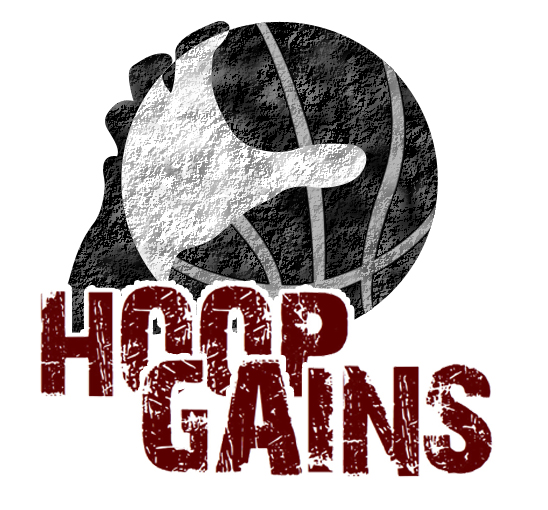Are You Wasting Your Time in the Weight Room?
/What's your goal for the time you spend in the weight room? How is what you're doing there going to help you on the court? Most amateur athletes don't know the answers to these questions. As a result, the time they spend in the weight room is mostly a waste.
The first problem is that too many athletes fail to lift with a purpose. They head into the weight room and throw some weight around without any goals in mind.
The second problem is that athletes often don't have an actual exercise plan that they can follow step by step when they're in the weight room.
I admit that I'm not perfect in this area. There are times where I don't plan out my exercises and I end up trying to figure out what to do as I go. This invariably leads to a less effective workout as a result of decision fatigue.
Although I occasionally don't have a written plan, I always have an objective in mind. There's always a basketball-specific reason for every exercise I do. This post will help you develop your purpose and exercise plan to make your work in the weight room more effective.
Here's how it works:
1) Come up with 1-3 areas you want to improve
These should be areas that can directly translate to your game. I strongly suggest writing them down so you can refer back to them. Plus, physically writing them down makes them more tangible.
Right now, I have a few offseason goals that I'm working on. First, I want to strengthen my legs to take pressure off of my knees. To do this, I'll be focusing on my hamstrings, hips, glutes and quads.
Second, I want to add 2-3 more pounds of muscle in my upper body to more effectively defend bigger guards.
It's vital that you have specific on-court goals in mind when you lift. Otherwise, your weight training won't translate to the court.
2) List all possible exercises that can help those areas
Be creative and do some research. If one of your goals is to improve your lateral quickness, it's worthwhile to spend 15-20 minutes online searching for drills to improve your lateral agility. There's tons of amazing resources out there that can help you get started, provide specific exercises, and teach you the right technique.
One of my favorite sites is stack.com but there are plenty of others that are great too.
When you find all your exercises, write them in a list so it's easy to see. For my first goal (taking pressure off my knees) among the exercises I listed were glute bridges, clamshells, terminal knee extensions, lateral leg raises, monster walks, rear foot elevated squats, RDL's etc.
Once, you've listed all those exercises, step 4 becomes much easier.
3) State the steps you are willing to take
Before you write the actual workout plans, take a moment to evaluate how much effort you're willing to put in. Don't B.S. yourself or else this process is useless.
To reach my fitness goals that I listed above, I have committed to performing 6 workouts a week (3 upper body and 3 knee-pressure reduction) on alternating days of the week lasting between 60-90 minutes for 5 weeks. These specific pledges help me stay on track and develop effective habits.
By explicitly committing to this plan, there is a greater consequence for skipping a workout. If I miss a lift, I've not only failed to get better, but I've failed to keep a promise that I made to myself. It's often this fear of failing to keep my own promise that motivates me to workout when all else fails.
4) Craft your cohesive workout plan
Now that you're aware of the effort you're willing to put in, you can compile your list of exercises from step 2 into individual workouts to create a comprehensive plan.
For me, this meant creating 6 different workouts (3 of each type) that I can cycle through for an entire week. 5 weeks later, that will be 30 completed workouts.
It's important to factor in your improvement as you go along. To do this, measure your weight, reps, time etc for each exercise the first time you perform it. Using this benchmark, try and improve each week by making each exercise more difficult.
If you like this concept of formalized workout plans, I wrote a similar post on designing your on-court offseason training that might help.
I'd love to see what your workout plan looks like! Email us at hoopgainsteam@gmail.com or connect with us on social media and I'd be happy to give tips and advice or just chat about basketball.

